8 Best Exercises for Men After 40 – Staying in shape is a lifelong pursuit. If you’ve ever looked at someone who looks great in their 40s, 50s, and even 60s, lifting weights has undoubtedly been a part of their routine for years. While many people think of weight training as a young man’s game, the fact of the matter is that individuals of all ages can seriously benefit from regular exercise with weights. For the most part, every man should be doing resistance training with free weight and bodyweight exercises in their 40s. The following are eight exercises for men to do after 40. I include them for virtually every client I train who’s above the age of 40.
If you are a man in your 40s and want to build strength, maintain or increase your muscle mass, and ensure you stay healthy and fit for the long haul, then be sure to include these exercises in your fitness routine. Perform each exercise for three sets of eight to 12 repetitions. Rest for 90 seconds between sets, and aim to complete the workout at least twice per week, or integrate these exercises into your overall fitness routine.
Read on to learn all about these exercises for men to do after 40, and when you’re done, don’t miss the 5 Best Exercises for Men Over 50 To Live Longer.
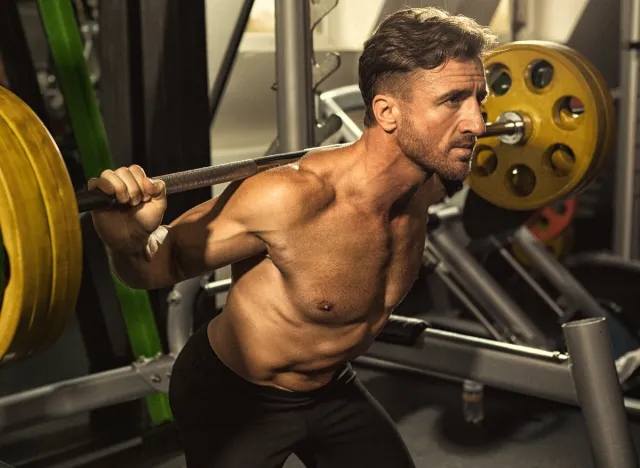

Squats are vital for maintaining leg strength, balance, and mobility as you age. They are also beneficial for bone health. This exercise works the quadriceps, hamstrings, glutes, lower back, and core muscles.
To perform a squat, If available, position a barbell at shoulder level on a squat rack, and set the safety pins just above waist level. Stand with your feet shoulder-width apart, and grip the barbell with your hands wider than shoulder-width. Unrack the barbell, and position it across your shoulders. Lower yourself by bending at the knees and hips, pushing through the full foot, and keeping your chest up. Return to the starting position by pushing through the full foot. Repeat for the target repetitions
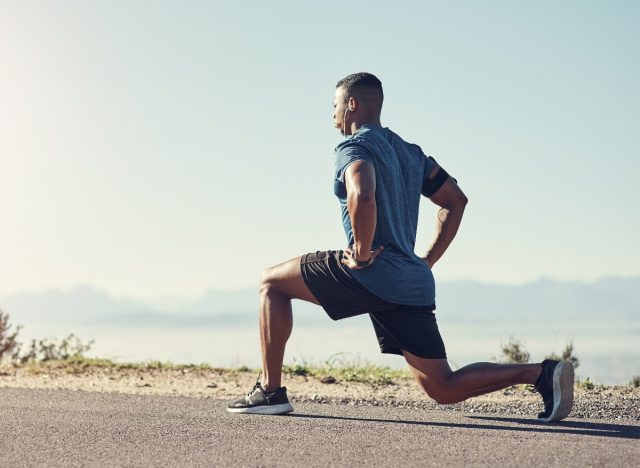

Lunges improve lower-body strength and flexibility and promote better balance and coordination. They work the quadriceps, hamstrings, glutes, and calf muscles.
To perform a lunge, stand upright with your feet hip-width apart. Step forward with one leg, and lower your body, rotating your back foot inward slightly as you lower the back knee for optimal biomechanics. Keep your torso upright, and ensure your front knee is aligned with your ankle.
Push through the full foot of the front leg to return to the starting position. Repeat for the target repetitions, then switch legs.
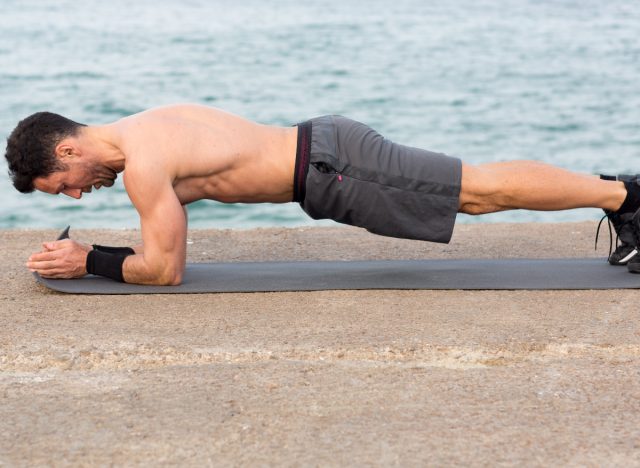

The plank is excellent for core stability and overall strength. It works the abdominals, obliques, lower back, shoulders, and chest.
To perform a plank, start in a forearm plank position with your elbows directly under your shoulders. Engage your core, and maintain a straight line from your head to your heels. Hold this position and breathe, visualizing drawing your lower rib toward your pelvis and engaging your abs. Repeat for the target time.
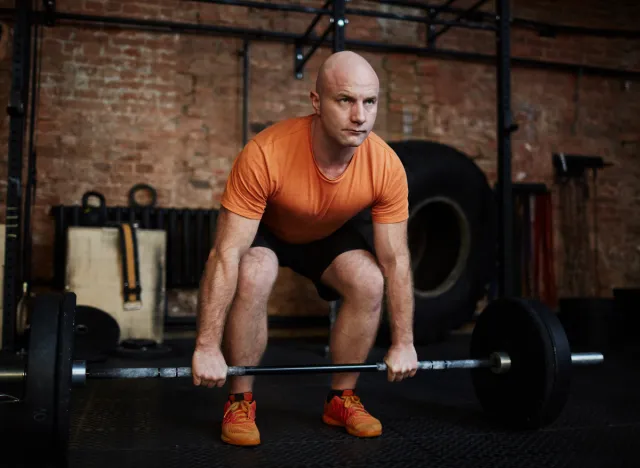

Deadlifts are essential for enhancing overall strength, particularly in the back and legs. They work the glutes, hamstrings, lower back, traps, and forearms.
READ RELATED: The Newest Girl Scout Cookie Is Finally Going on Sale & It’s Being Compared To Thin Mints
To perform a deadlift, stand with your feet shoulder-width apart and a barbell in front of you. Bend at the hips and knees to grasp the barbell with both hands. Lift the barbell by straightening your hips and knees, squeezing the end range for about one second, and keeping your back straight. Lower the barbell to the ground by reversing the motion, maintaining control. Repeat for the target repetitions.
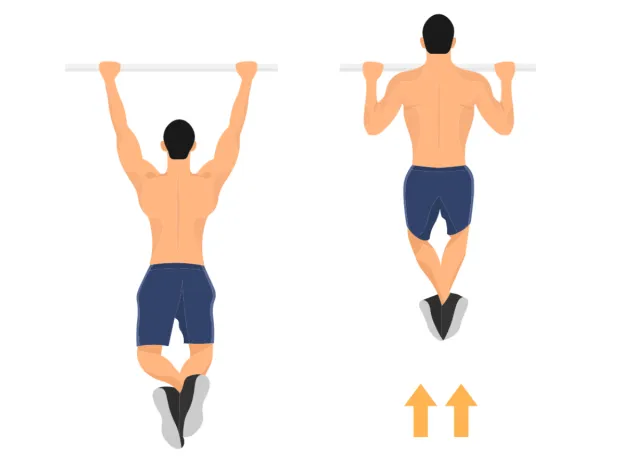

Pull-ups are great for upper-body strength and work the back, biceps, and shoulders.
To perform a pull-up, grip a pull-up bar with your hands wider than shoulder-width. Hang onto it with your arms fully extended and your feet off the ground. Pull yourself up by retracting your shoulder blades and visualizing crushing a piece of fruit in your armpit, squeezing at the end range of motion. Lower yourself to the starting position with control. Repeat for the target repetitions.
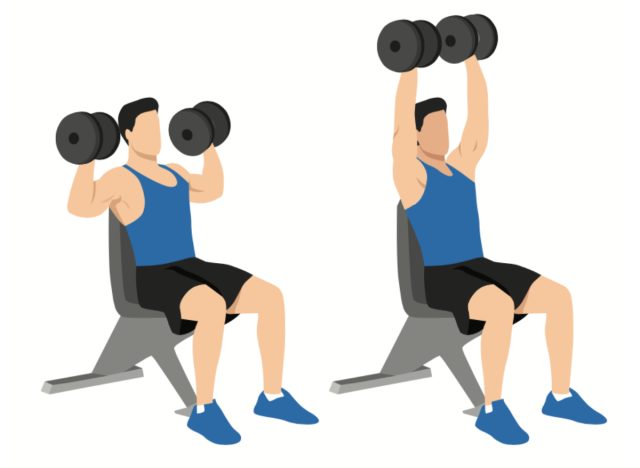

This exercise targets the shoulders, triceps, and upper chest. It’s valuable for maintaining shoulder health and strength.
To perform a dumbbell shoulder press, sit on a bench with back support, holding a dumbbell in each hand at shoulder height. Press the dumbbells overhead, avoiding shrugging throughout the range of motion. Pause at the top, then lower the dumbbells to the starting position. Repeat for the target repetitions.
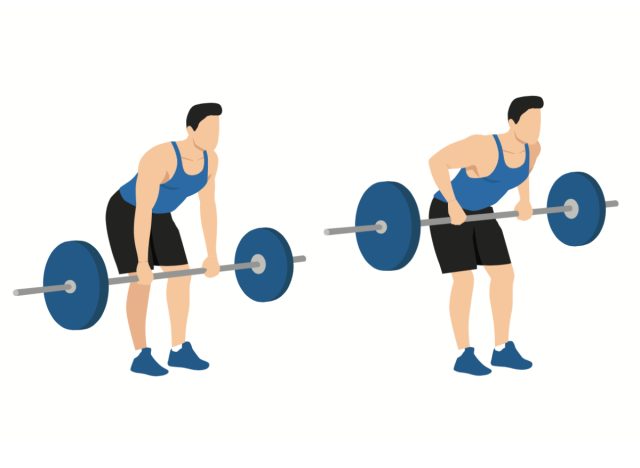

Barbell rows strengthen the back and biceps and improve posture. They work the latissimus dorsi, rhomboids, traps, and biceps.
To perform a barbell row, stand over a barbell with your feet hip-width apart. Bend at the hips and knees, and grasp the barbell with an overhand grip. Pull the barbell toward your lower rib cage, visualizing crushing a piece of fruit in your armpit as you retract your shoulder blades. Lower the barbell with control, avoiding shrugging throughout the range of motion. Repeat for the target repetitions.
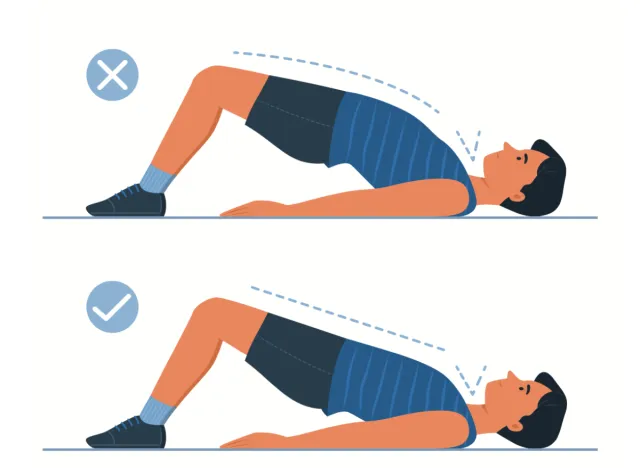

Glute bridges are excellent for lower back and hip health. This exercise works the glutes, hamstrings, and lower back.
To perform a glute bridge, lie on your back with your knees bent and your feet flat on the floor, hip-width apart. Push through the full foot, and lift your hips toward the ceiling, visualizing drawing your lower rib toward your pelvis and engaging your abs. Hold the top position, squeezing the glutes, for about one second. Lower your hips back to the floor with control. Repeat for the target repetitions.








